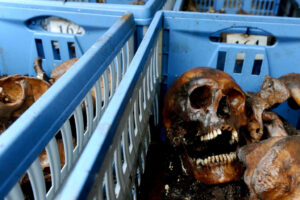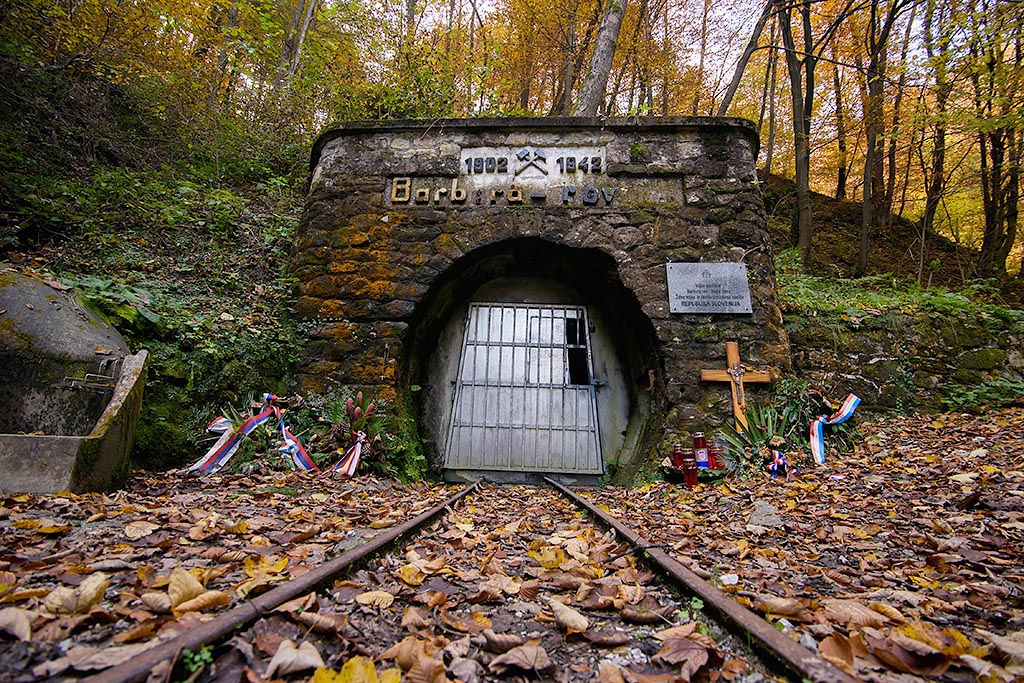The Government Commission on Concealed Mass Graves in Slovenia has declared 2024 as the Year of Commemoration of 15 years since the entry into St Barbara’s Tunnel – the Barbara Pit in Huda Jama near Laško, where the victims of a massacre were found, and the dialogue on the burial of the unburied dead. The Commission is preparing a number of activities, which it will present in more detail at the beginning of March, the Commission’s chairman, Jože Dežman, told the Slovenian Press Agency.
“The entering into the Barbara Pit has been commemorated in the past. However, it is necessary to remember the conditions in which the remains of those murdered in the St Barbara’s tunnel in Huda Jama had to wait from 2009 to 2016, when 1,416 of the murdered were finally buried in a temporary grave in the Dobrava cemetery in Maribor,” Dežman explained.
In March 2009, a concealed mass murder site for victims of post-war killings was found in a mining tunnel in Huda Jama near Laško. The remains of around 800 victims were dug up and placed in plastic boxes in the ossuary. The case then stalled for a few years, but after the adoption of the Concealed War Graves and Burial of Victims Act in 2015, things moved forward. In October 2017, the remains from the temporary ossuary in Huda Jama were transferred and buried in the cemetery in the Dobrava Memorial Park in Maribor.
Slovenian communists are taking us back to the past times
In Dežman’s opinion, we need to be aware of the way of blocking the burial, “as used by various forces in the case of those murdered in the St Barbara’s tunnel,” for example, former President of the Republic Danilo Türk; the Ljubljana municipality with the naming of Tito’s Road, and others, is taking Slovenia back to some past times, or in his opinion, these attempts are part of the neo-Stalinist renaissance, which means denying the foundations of Slovenia as a country based on the rule of law and human rights.

He also mentioned that the memorial to the victims of all wars and those connected to them in Ljubljana still does not have a dedicatory inscription, precisely because of these commemorative wars.
“Also at the core of Slovenian neo-Stalinism is the behaviour of the municipality, headed by Mayor Zoran Janković, who refuses to bury both the victims of the genocide of the Roma people (porajmos), who were murdered by the partisans, and the victims of the worst fratricidal crime in Slovenian history, the more than 3,450 murdered from the Cave under Macesnova gorica,” he said. This is why, in his view, both commemoration and dialogue are necessary.
At its January meeting, the Commission also called on all stakeholders to reintroduce a national day of commemoration for the victims of communism. However, after a substantive discussion, the Commission adopted the 17th of May as the most appropriate date for commemorating the victims of communism, according to Dežman, following suggestions to choose another date for the commemoration.
Dežman also reminded everyone of the petition prepared by historian Mitja Ferenc, who was also its first signatory, on the right to burial and respectful remembrance of the victims of the post-war communist killings in Slovenia, which was published in the European Parliament. The European Parliament will debate the issue next week.
C. Š.


